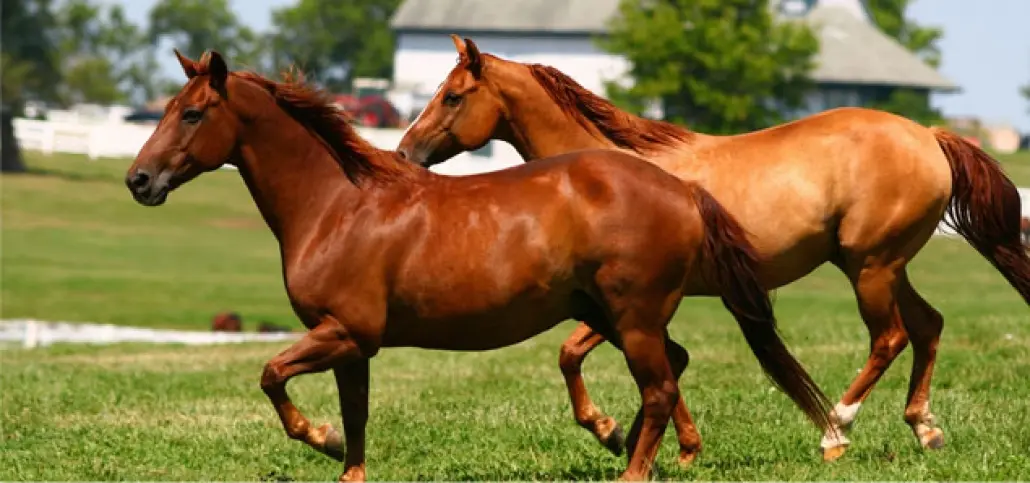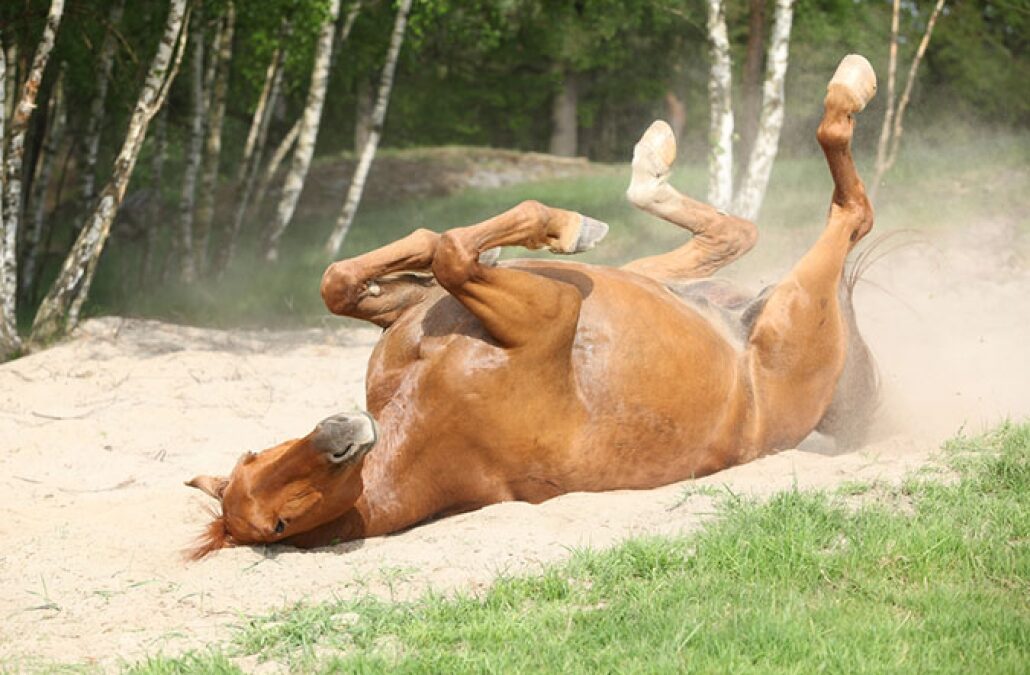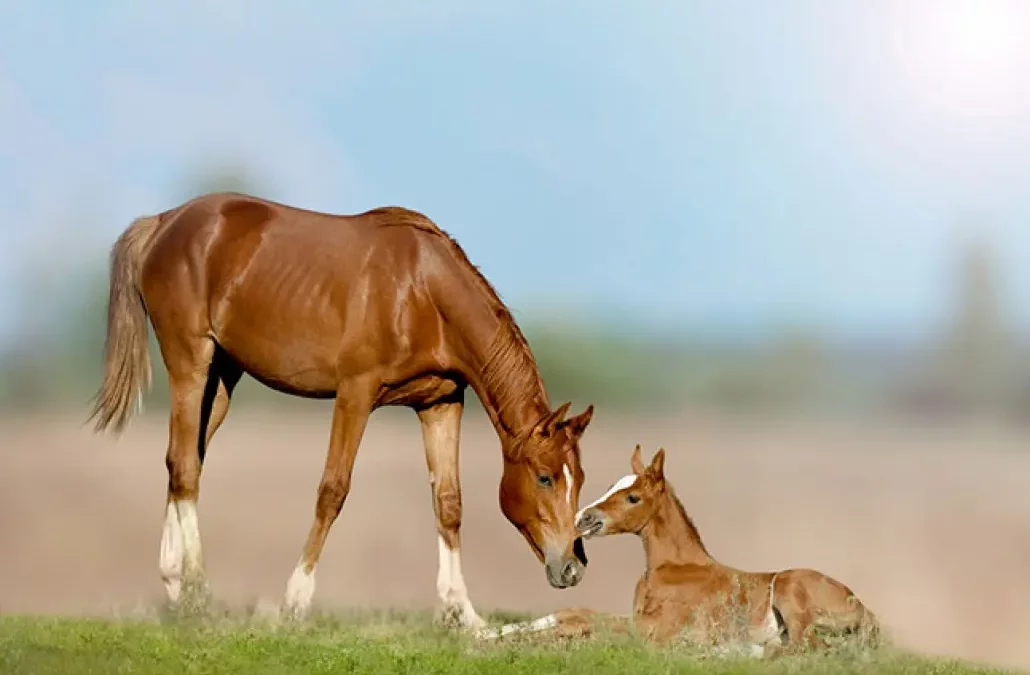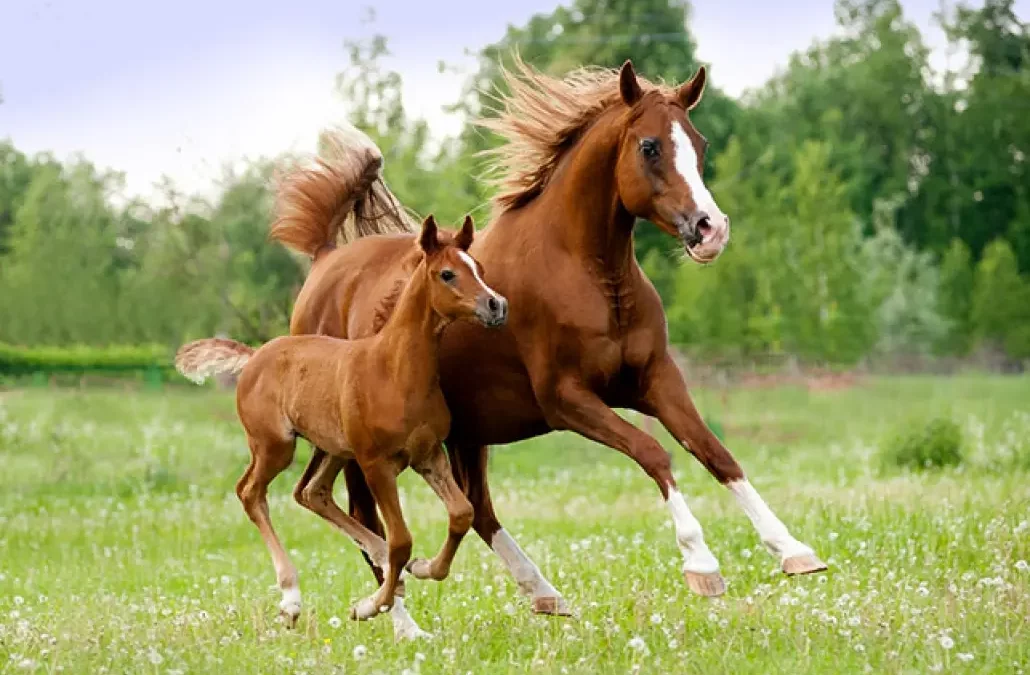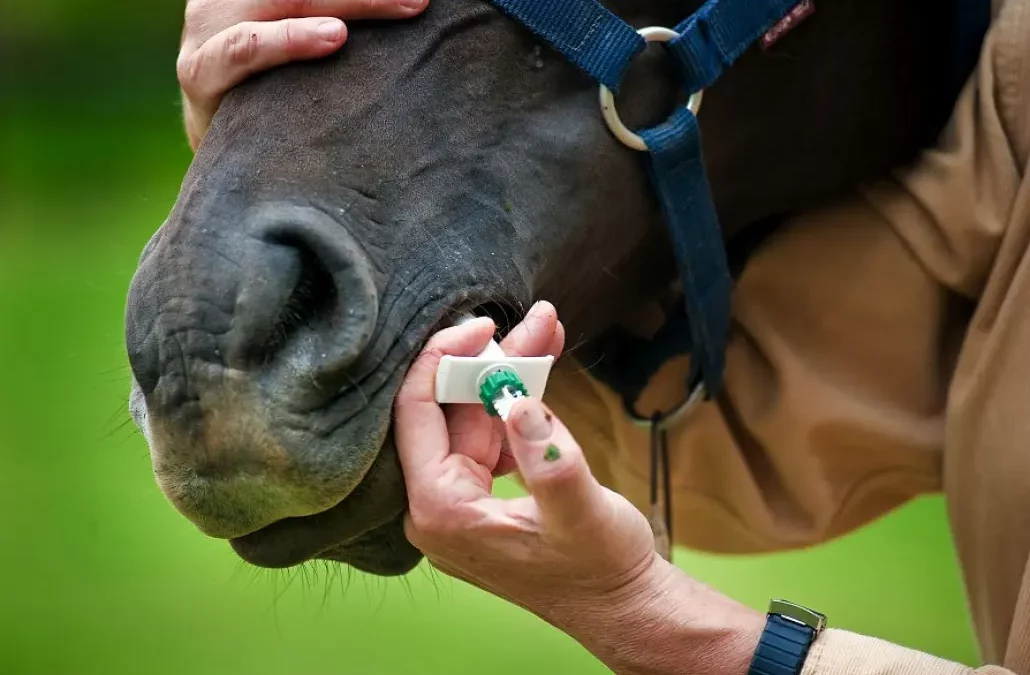Despite the fact that influenza is a well-known disease (Hippocrates first described a disease resembling influenza in 412 B.C.), the virus continues to cause significant morbidity and mortality in humans and animals alike.
Influenza virus is the most common cause of equine viral respiratory tract disease, making a substantial economic impact on the horse industry annually. Outbreaks occur most frequently when susceptible animals are housed in close contact with one another, as is typical at racetracks, sales barns and horse shows. Virus spread occurs through direct contact with infected horses. Through contact with virus-contaminated droplets created by coughing and sneezing, and through contact with fomites (e.g. virus-contaminated water buckets, clothing, grooming equipment, tack, etc.). Clinical signs of infection in horses include fever, appetite loss, lethargy, nasal discharge (watery first but typically becoming mucoprulent, meaning it contains pus and mucus) and coughing. In uncomplicated cases, clinical signs resolve in approximately seven to 14 days, although coughing might persist longer. Complications can be severe and might include secondary bacterial pneumonia, myositis (muscle inflammation), myocarditis (heart muscle inflammation) and limb edema (fluid swelling).
Vaccinating against influenza is one of the most important ways to protect horses from the disease. Researchers have demonstrated that many of commercially available equine influenza vaccines are highly efficacious, protecting horses from experimental equine influenza challenge. So why has influenza remained such a serious threat to our horses’ health?
First, influenza viruses are notorious for undergoing a process called antigenic drift – they accumulate small changes over time. Antigenic drift results in new virus strains that the immune system might not recognize. This is one of the main reasons why people and animals can get the flu more than once. It is also the main reason manufacturers must update influenza vaccines periodically with new virus strains. Although equine influenza viruses’ rate of antigenic drift is relatively slow compared to human influenza viruses, it is significant in terms of immunization efficacy. A number of the commercially available equine vaccines have recently undergone an update to provide better protection against currently circulating strains.
While antigenic drift is an important reason for potential vaccine failure, the occasional introduction of influenza strains stemming from other species also accounts for the vast diversity of influenza viruses. Influenza virus has “partial host range restriction,” which means viruses originating from one species can occasionally transmit and infect another species. Examples of this include the direct transmission of the H5N1 and H7N9 “bird flu” viruses to humans. Another example is the spread of equine H3N8 influenza virus to dogs in the United States; this transmission event established canine H3N8 influenza virus as a novel canine respiratory pathogen. Similar equine-to-canine influenza cross-species transmission occurred on two separate occasions in the United Kingdom and the 2009 equine influenza outbreak in Australia. These events raised the question of whether the reverse is also true: Does canine H3N8 influenza represent a potential health threat to horses? A recent experimental inoculation of ponies with canine influenza virus resulted in only mild clinical disease and minimal nasal virus shedding in these animals, suggesting canine viruses might have low infectivity for horses.
In summary, because of influenza viruses’ inherent ability to infect a broad range of host species, their capacity to occasionally cross the species barrier, as well as their continued antigenic evolution, influenza continues to represent a serious infectious disease threat to humans and animals alike. This has important implications for control, since commercially available vaccines might not provide protection against infection with viruses stemming from other species. Moreover, the sustained antigenic drift of influenza viruses continues to result in vaccine failures. Thus, influenza surveillance and inclusion of viral antigens representative of contemporary circulating viruses must remain a priority.
About the Author: Gabriele A. Landolt, DVM, MS, Ph.D., DACVIM is an assistant professor of equine medicine in Colorado State University’s Department of Clinical Sciences. This article is provided courtesy of AAEP Media Partner, The Horse.

